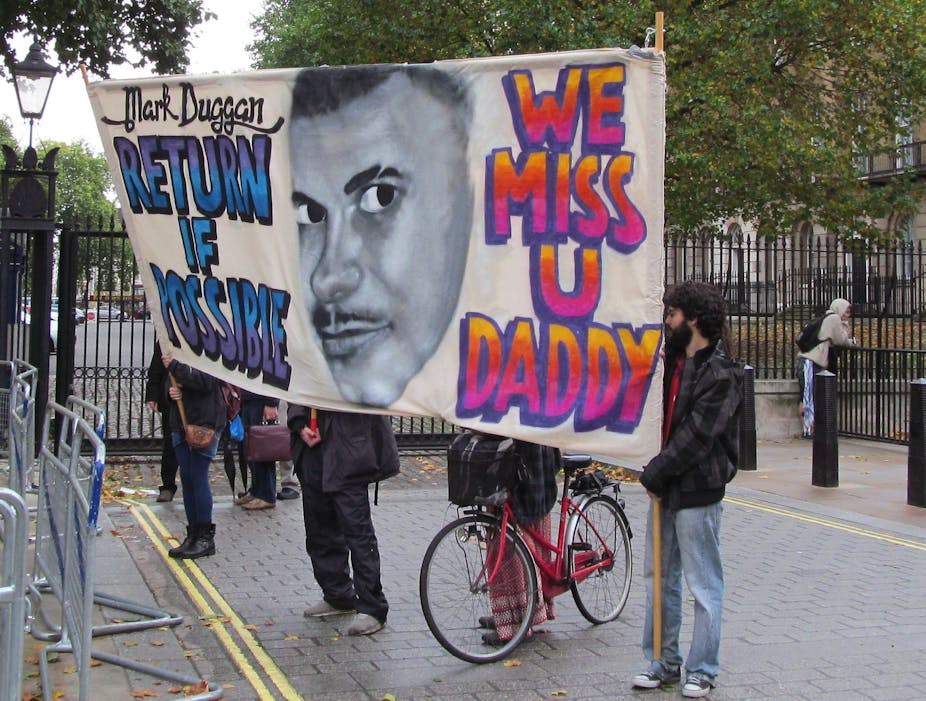The Mark Duggan inquest jury has concluded, by an 8-2 majority, that the police shooting which sparked riots across England in 2011 was lawful. But their answers to the particular questions, posed by the coroner in an effort to help them frame their verdict, only open up further ambiguities surrounding police armed response and the legality of lethal force.
By a majority of 9-1, the jury concluded Duggan had thrown away the gun as soon as the vehicle in which he was travelling pulled over and before he was physically confronted by police (although no witness confirmed this). By a majority of 8-2 (even the maths here does not work) they concluded that he did not have the gun when shot; but still they went on to decide, by 8-2, that the killing was lawful. The police will undoubtedly feel they have been exonerated on the most critical question, even though there is little comfort for them in the wider judgements reached by the jury.
These verdicts came after more than 50 days of listening to evidence, followed by three full days of unresolved deliberations, after which the jury was told by Judge Keith Cutler that he would be willing to accept a majority rather than a unanimous verdict before the inquest broke for Christmas.
In our book, former police officer Peter Kennison and I analysed police armed response policy and operational practice as well as case studies of several police shootings, including the mistaken killing of Brazilian Jean Charles de Menezes at Stockwell tube station in 2005. Throughout the book we questioned a number of the critical decisions which, in each case, had led to fatal police confrontations.
The Mark Duggan shooting also bears a striking resemblance to the police killing of Azelle Rodney in 2005. The two incidents were almost identical; pursuing police had undertaken a “hard vehicle stop” on cars in which suspected armed gang members were travelling. In both cases, within seconds, a suspect had been shot dead by police. In the Rodney case an inquest was adjourned pending resolution of a separate legal question concerning police intelligence and covert information gathering practices which, it was claimed, would compromise ongoing operations if disclosed. In the end, the full story only emerged a full eight years after the death, following a judicial inquiry.
The findings in the Rodney case went the other way, and were devastating for the police. Sir Christopher Holland, who chaired the inquiry, concluded in his July 2013 report that there had been many flaws in the operation to stop the vehicle in which Azelle Rodney was travelling; that the use of lethal force was unwarranted and disproportionate and that the evidence given by Met Police officers was unreliable.
In each of the inquests, juries heard a great deal of ambiguous and contradictory evidence concerning flawed decision-making and a series of police errors. In the Duggan case there were questions about the precise timing of events and about a gun that Duggan was said to be carrying, and how it could have ended up so far away – the jury decided Duggan had thrown it from the car as it stopped.

It is remarkable to think the jury spent more than 50 days deliberating something that, in essence, was over in a couple of split-second trigger-pulls.
There may be a lesson here. In a 1921 American criminal case the eminent US judge Oliver Wendell Holmes declared: “detached reflection cannot be demanded in the presence of an upturned knife”. This idea subsequently became the “Holmes doctrine”, embracing the sensible suggestion that, facing serious imminent risk, victims should be entitled to do what they perceive necessary to protect themselves.
But police officers do not have the option of running from danger, though they surely have a right to expect that they will not be unnecessarily put in harm’s way, and left with little option but to shoot. The Metropolitan police may have learned something here; attending an armed response master class run by the police earlier in 2013 I was told, we “never do hard vehicle stops any more”. If true, that might be a start even if the policy change seems conveniently sudden. Although police officers are still likely to be called upon to shoot, and to kill.
I was interviewed for a Panorama programme on fatal police shootings last year. The documentary was postponed along with the verdict. As part of my interview, I was asked, “do you think that the police ‘shoot to kill’?” to which I replied: “Yes – if you fire multiple shots at the head or torso with the intention to incapacitate a suspect, you are highly likely to kill someone. Although the whole of our work in this area has been to try to ensure this happens less often. So we have fewer tragedies, fewer inquests, fewer fatal mistakes and and less discredit piling up upon the police. They have a difficult enough job to do already.”
The tension around the courtroom has been palpable for many weeks; hopefully there will be no more nights of rioting, but the jury has struck a familiar compromise. They have criticised the wider planning, intelligence-use and preparations made by the Metropolitan Police, while recognising the difficulties faced by those officers at the sharp end of the operation. Trained and equipped as they are, the officers face the greatest risks and shouldered the awful responsibility of making a split-second decision with such appalling consequences.

